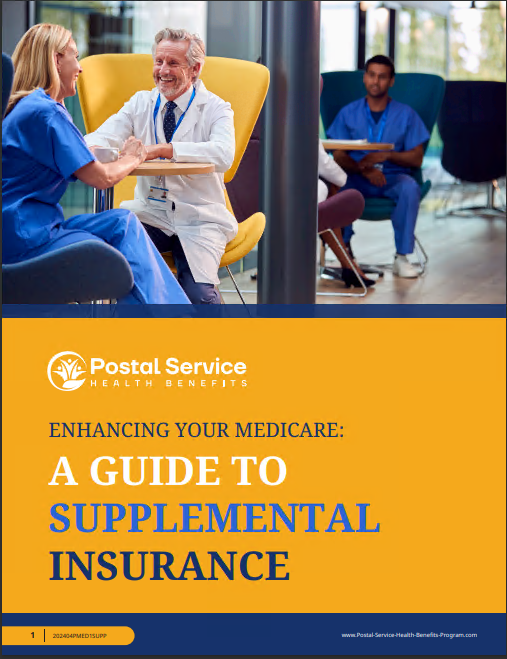Key Takeaways:
- New Health Plan, New Rules: As of January 1, 2025, all USPS employees and retirees will switch from FEHB to the Postal Service Health Benefits (PSHB) program, bringing new coverage options and rules.
- Open Season Enrollment: From November 11 to December 9, 2024, you’ll have the chance to review, change, and choose the right PSHB plan for you and your family as part of the PSHB Open Season.
Understanding the New PSHB Program
Starting January 1, 2025, all USPS employees and retirees will experience a big shift in health coverage. This change is all thanks to the Postal Service Reform Act of 2022, which paved the way for the Postal Service Health Benefits (PSHB) program. It’s important to understand the changes, so you’re ready when Open Season arrives, running from November 11 to December 9, 2024. During this time, you can take a deep dive into the plans and make decisions about your health coverage moving forward.
The shift from FEHB to PSHB means there are some new rules, but also some things stay the same. Dental and vision coverage, for instance, will still be available through the Federal Employees Dental and Vision Insurance Program (FEDVIP). And you’re going to want to pay attention to this Open Season period, because it’s your chance to make any changes for 2025.
What to Expect During Open Season
So what exactly is Open Season? It’s that annual window where you can make changes to your healthcare coverage. For USPS employees and retirees, Open Season 2024 is critical because this is when the transition from the FEHB program to PSHB officially takes place. If you’re currently covered under FEHB, you’ll automatically be placed into a PSHB plan that is similar to your current coverage, but you still have the opportunity to review the options and make adjustments during Open Season.
You’ll also have the chance to adjust your FEDVIP dental and vision coverage at this time. While dental premiums are expected to rise by around 2.97% in 2025 and vision premiums by 0.87%, it’s still a good time to assess if your coverage levels are meeting your needs.
Premium Breakdown: Understanding the Costs
With any health plan, it’s crucial to understand what you’re paying and what you’re getting. Under the PSHB program, the costs are broken down into self-only, self-plus-one, and family plans. The good news is the federal government will continue to cover a significant chunk of your premium, contributing 72% of the total cost. Here’s a quick glance at the average PSHB premium breakdown for 2025:
- Self Only: The total biweekly premium is around $397.35, with employees contributing $111.26 per pay period.
- Self Plus One: Total premiums for this tier average $858.89 biweekly, with employees paying $240.49.
- Self and Family: This option will cost about $934.65 biweekly, with the employee portion set at $261.70.
This means your annual contribution as an employee will vary from approximately $2,893 to $6,804, depending on the plan you choose.
What About Medicare?
Here’s where things can get a little tricky. If you’re already retired or will retire on or before January 1, 2025, you can breathe a sigh of relief—you’re not required to enroll in Medicare Part B to keep your PSHB coverage. That goes for your family members as well.
But if you retire after January 1, 2025, things change. You and any family members on your PSHB plan will need to enroll in Medicare Part B once eligible, which is typically at age 65. This is important because your PSHB plan will work hand in hand with Medicare, which could ultimately help lower your overall healthcare costs. For some, PSHB plans offer additional savings for Medicare enrollees, like reimbursement of Part B premiums and reduced out-of-pocket expenses.
If you’re not already enrolled in Medicare Part B and missed the Special Enrollment Period (SEP), which ran from April to September 2024, don’t worry—there may still be time to explore your options and make sure everything is set for your retirement.
Prescription Drug Coverage
If you’re eligible for Medicare, you won’t need to worry about enrolling in a separate Part D plan. All PSHB plans for Medicare-eligible participants include Medicare Part D prescription drug coverage, which will save you from having to juggle separate premiums and policies.
It’s always a good idea to review the formulary (that’s the list of drugs your plan covers) to make sure your prescriptions are included. You’ll want to see if your medications are covered and what your costs will be under your new plan.
Comparing Your Options
Making decisions about healthcare can be overwhelming, especially when there are multiple plans to consider. Fortunately, the Office of Personnel Management (OPM) provides a plan comparison tool that will be available during Open Season. This tool is your best friend when it comes to evaluating the various PSHB plans and FEDVIP options to ensure that your chosen coverage meets your specific needs.
Look for factors like:
- Premiums: How much will you pay every two weeks?
- Deductibles and Co-pays: What are your out-of-pocket costs when you visit the doctor or fill a prescription?
- Coverage: Are your preferred doctors and hospitals in-network? Is your medication covered?
Take the time to compare everything before making your decision. It’s a once-a-year opportunity to make changes, so it’s worth spending a little extra time getting it right.
Staying Covered with Other Federal Benefits
One thing you don’t need to worry about is losing access to other federal benefits. Enrollment in PSHB won’t affect your ability to participate in programs like FEDVIP, Federal Employees’ Group Life Insurance (FEGLI), or the Federal Long Term Care Insurance Program (FLTCIP). These will continue to be available to you, so your long-term planning for other aspects of your life won’t be disrupted by the shift to PSHB.
Preparing for 2025 and Beyond
As we head into 2025, make sure you’re informed and ready for the changes coming your way. Whether you’re actively employed or retired, understanding the new PSHB program will help you make the best decisions for you and your family. Remember, the clock is ticking on Open Season (November 11 – December 9, 2024), so use this time wisely.
Between navigating premium changes, Medicare integration, and selecting the right coverage, there’s a lot to consider. But the more you know, the better equipped you’ll be to make confident decisions. And don’t forget—your dental and vision coverage under FEDVIP is still there to cover your routine exams and prescription eyewear.
Ready for Open Season?
With the upcoming Postal Service Health Benefits (PSHB) changes on the horizon, now is the time to get everything in order. This is a huge opportunity to make sure your health plan is aligned with your needs. Whether it’s tweaking your plan to save on premiums or ensuring your medications are covered, every detail counts. Be sure to take advantage of the comparison tools and resources available, so you can feel good about the choices you make during this important Open Season period.






